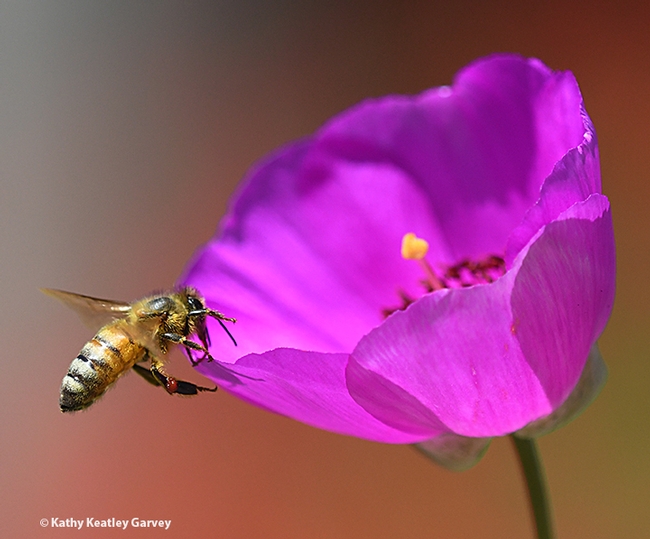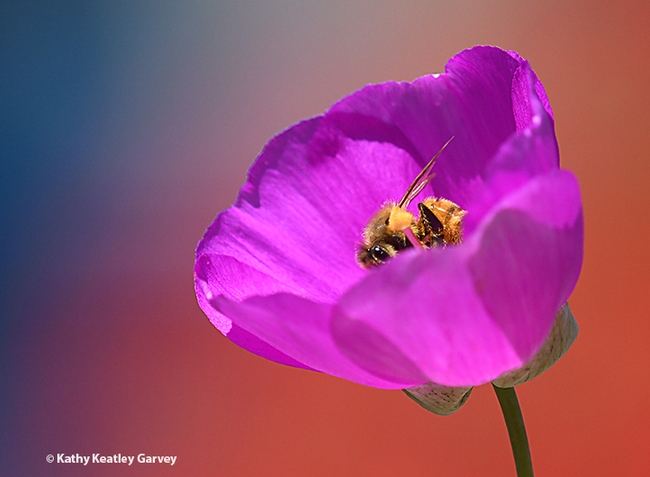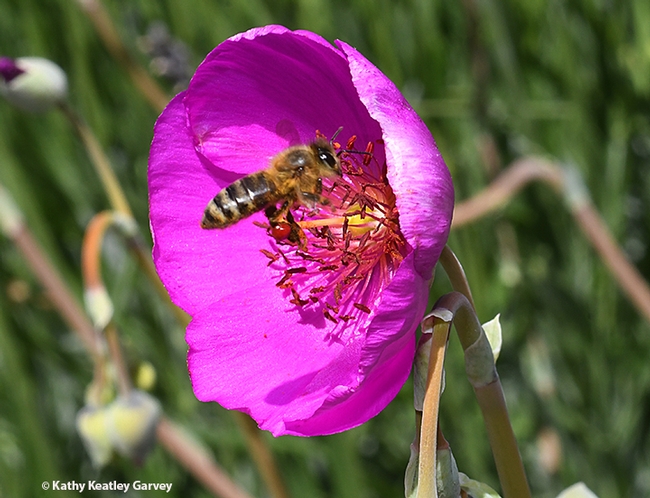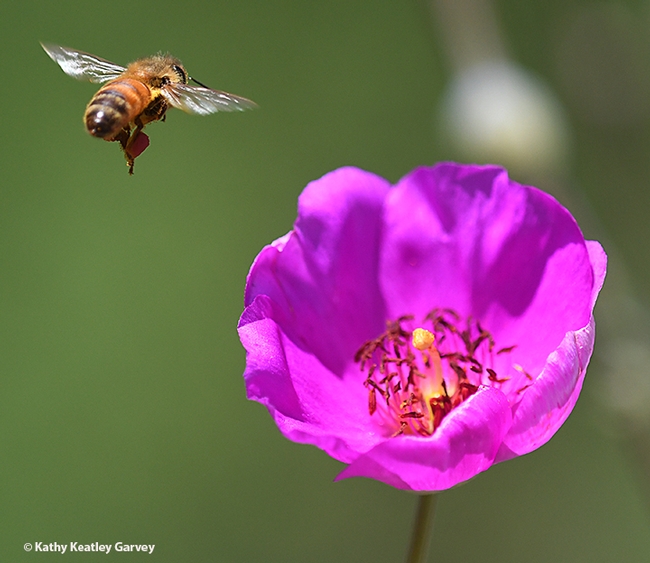It's Earth Day, an event we celebrate every April 22 to demonstrate support for environmental protections on our troubled planet. This year's theme: "Restore Our Earth."
U.S. Sen. Gaylord Nelson launched Earth Day on April 22, 1970, with the idea of holding a nationwide environmental teach-in at colleges throughout the country. His idea morphed into Earth Day.
Sadly, however, most college campuses are temporarily or partially closed due to the COVID-19 pandemic, so the face-to-face "teach-ins" are primarily Zoom sessions. Who would have thought? Who could have known?
What to do on Earth Day? Watching bees forage in a pollinator garden seems appropriate to recapture some of Earth Day's magic. Honey bees, responsible for pollinating one-third of the food we eat, continue to gather pollen, nectar, water and propolis every day (weather permitting), not just Earth Day.
Today's favorite fauna and flora: honey bees, Apis mellifera, foraging on rock purslane, Calandrinia grandiflora and packing red pollen back to their colonies. Just call them "temporary occupants" on Planet Earth. But always call them "special."
Read NASA's Nine Reasons We're Grateful to Live on Earth, posted April 21, 2020 for a better grasp of what we have and what we could lose. "The promise of a better life in the mysterious beyond can be seductive. But the fact is the more we learn about out there the more we realize how special it is here. The first astronauts to look from space back at Earth, a 'pale blue dot, the only home we've ever known,' as scientist Carl Sagan once wrote, saw a beautiful, delicate world that is perfectly suited to the bounty of life it supports."
Happy Earth Day!
Attached Images:

A honey bee touches down on a rock purslane, Calandrinia grandiflora. This plant yield red pollen. (Photo by Kathy Keatley Garvey)

A honey bee rolling around in rock purslane on Earth Day. (Photo by Kathy Keatley)

A honey bee packing red pollen from the rock purslane. (Photo by Kathy Keatley Garvey)

A honey bee leaving a rock purslane and heading off to another one. (Photo by Kathy Keatley Garvey)